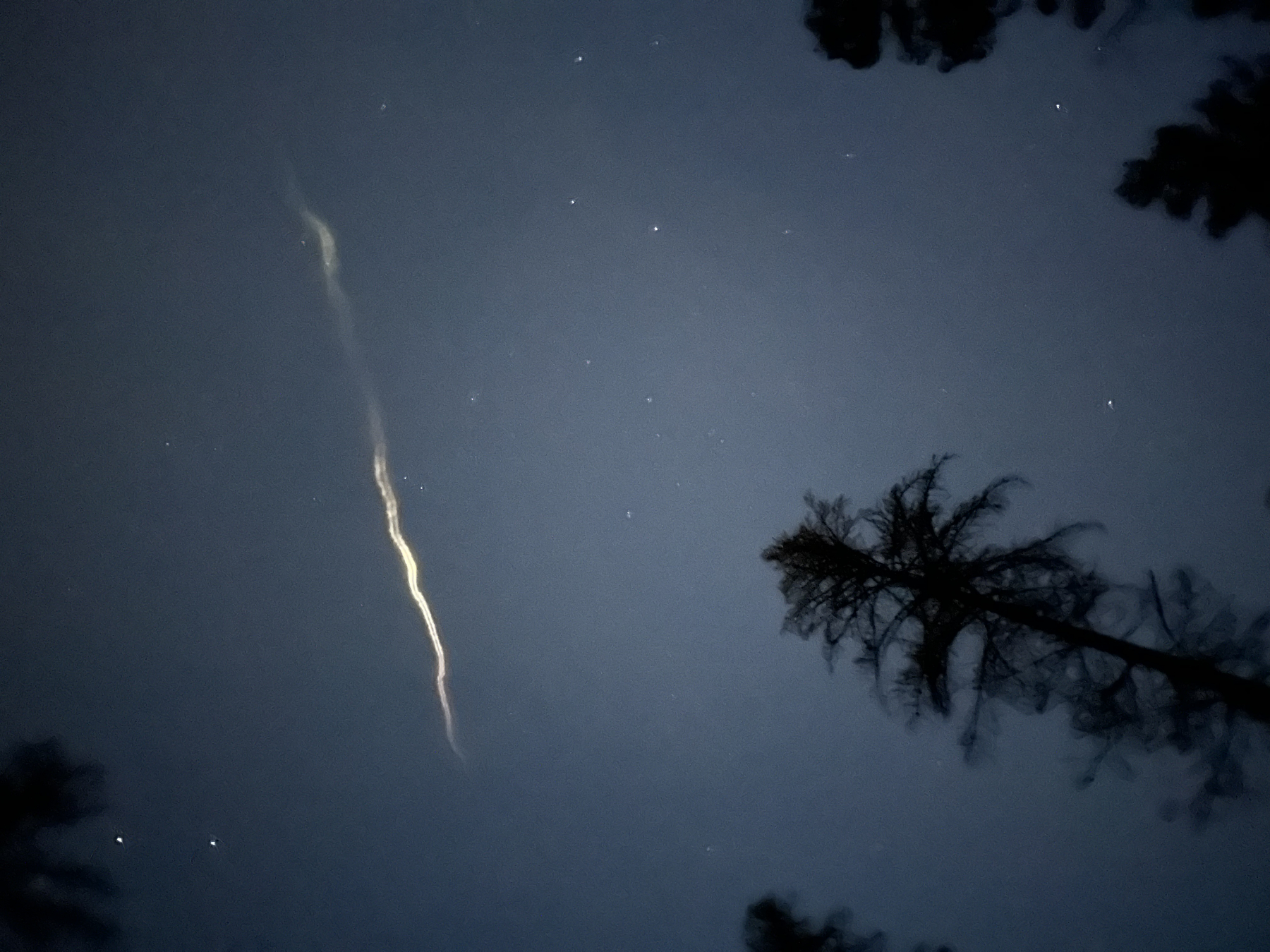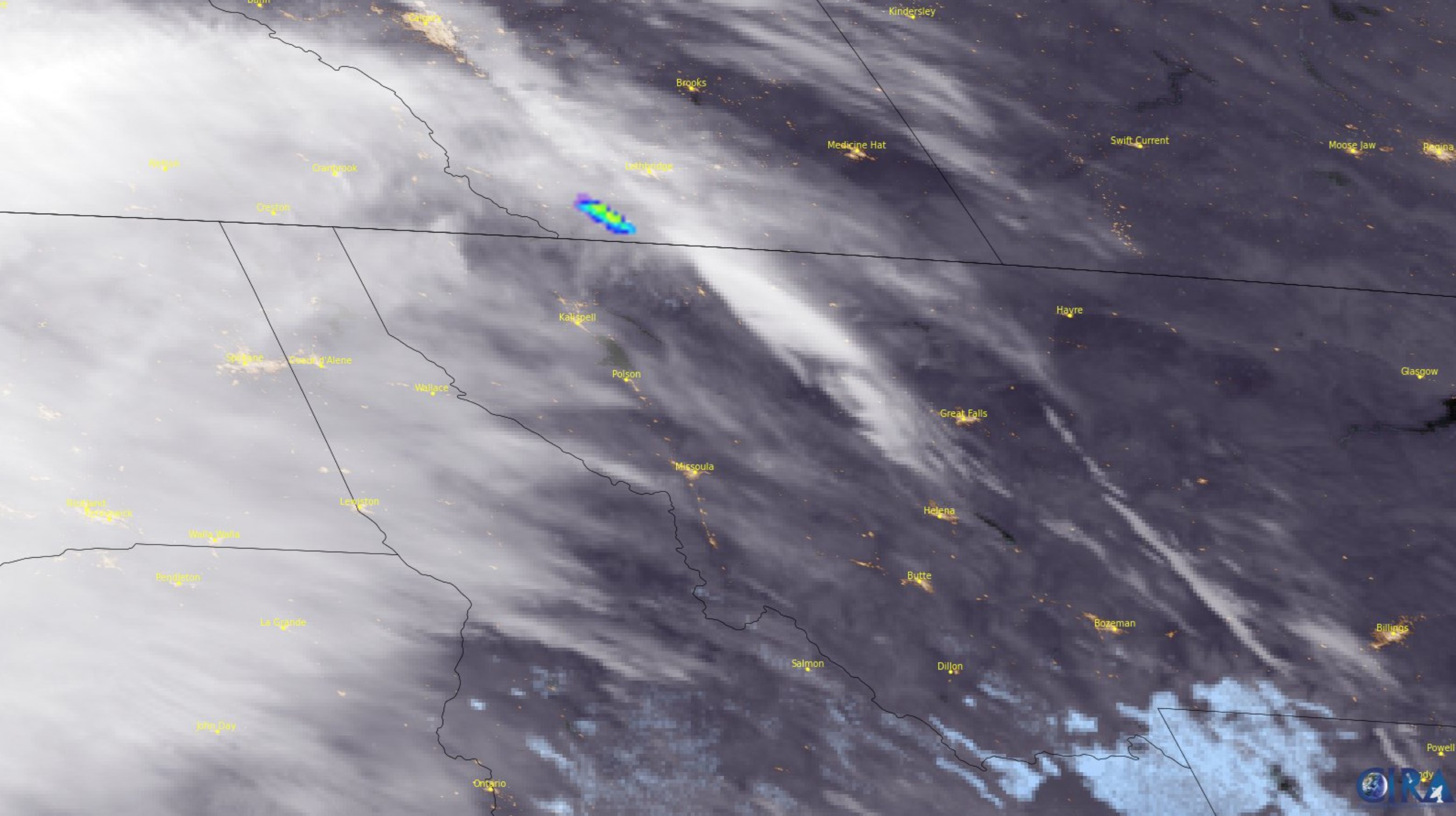One other fireball lit up the skies this week, this time over the U.S. Midwest and elements of Canada — however not like the final one, this one got here from outer area.
The meteor burned up on the morning of Nov. 13, round 6:31 a.m. Mountain Commonplace Time (8:31 a.m. EST or 1331 GMT). The ensuing fireball appeared to journey southeast and was seen from Alberta and Saskatchewan provinces in Canada and all through Montana, Idaho and elements of Washington, Wyoming and North Dakota. Quite a few doorbell cameras, sprint cameras and cell telephones captured the fiery spectacle, displaying a inexperienced streak brightening for a number of seconds because it streamed throughout the early morning sky.
One other fireball was caught on digital camera earlier within the week on Saturday (Nov. 9), however this one got here from a really totally different supply: a falling Starlink satellite tv for pc that was burning up upon reentry into Earth’s ambiance.
Based mostly on the movies and eyewitness studies submitted to the American Meteor Society (AMS), this seems to have been a superb fireball.
“I’ve seen (and photographed) a number of fireballs earlier than, however this was among the many most spectacular I’ve seen,” wrote Dave R. of Alberta, Canada. “There was a greenish streak after which a really brilliant flash. The streak continued however shrunk in brightness. Then there was a secondary smaller and dimmer flash alongside the identical meteor path. This all occurred inside 2 seconds or so.”
“Abruptly I may see the highway and my environment as if it was early/mid morning,” wrote Kaitlynn D. in Corvallis, Montana.
“This was the brightest and longest meteor I’ve seen this shut up,” Emily G. of Clancy, Montana wrote in a report back to AMS.

The fireball was even seen from area.
Two of the GOES climate satellites operated by the Nationwide Oceanic and Atmospheric Administration’s captured the second the meteor burned up in Earth’s ambiance. One, the GOES-18 spacecraft, noticed the meteor with an instrument designed to detect lightning strikes.

One other NOAA satellite tv for pc, GOES-16, noticed the flash utilizing its personal lightning sensor. The sensor is designed to detect brilliant flashes of sunshine, which means notably brilliant meteors will generally seem in its information and imagery.
Here is one other take a look at the meteor signature from the Geostationary Lightning Mapper (GLM) on @NOAA’s #GOESEast (#GOES16).Learn extra about how #GLM tracks meteors: https://t.co/qm3r6bK7Cx https://t.co/8v0t7Rwz9q pic.twitter.com/eWKPclyzNjNovember 13, 2024
Meteors like this one develop into seen when small items of area mud (recognized meteoroids whereas in area) that come from asteroids or comets enter Earth’s ambiance at very excessive speeds.
As they journey via the ambiance, these small specks of area mud collide with particles of air, which generates friction and produces warmth. That warmth then vaporizes most meteors, creating the intense streaks of sunshine we see zoom throughout the sky.
The subsequent meteor showers we are able to anticipate would be the Leonid meteor bathe, which is able to sadly peak on Nov. 16 below a brilliant moon which is able to make seeing them tougher. After that, we are able to sit up for December’s Geminid meteor bathe.





